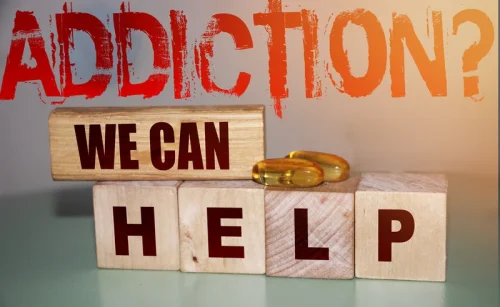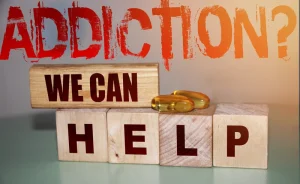
This chapter provided fundamental information on historical perspectives as well as current models and theories of the family; rationales for including families in SUD treatment; and an overview of family-based interventions. In Chapter 2, readers will find a more detailed exploration of the effects of SUDs on families, family roles and dynamics, and long-term outcomes. Chapter 2 addresses the effects of SUDs on diverse family groups, including those with adolescents who have SUDs and parents who have SUDs. SUD treatment programs can intervene with families at different treatment phases and levels of engagement. In detoxification, a counselor may first offer psychoeducation and general information about substance misuse and treatment options that seems applicable.
Family Recovery Support Groups
A family-focused peer recovery support specialist is a nonclinical provider who is trained and supervised in providing education, support, and resources to family members who have a family member with an SUD. Family peer recovery support specialists have lived experience of having a family member with an SUD, mental disorder, or co-occurring disorder. In the 1980s and 1990s, Berg and Miller (1992) and de Shazer (1988) developed a family counseling approach to help family members find solutions to their problems instead of using the problemsolving approach of structural and strategic counseling. The main assumptions of solution-focused therapy are that pinpointing the cause of problematic family functioning is unnecessary and that counseling focused on solutions to specific problems is enough to help families change.
Behavioral couples therapy

The SUD treatment field has promoted the myth that family counseling that includes the client with SUD may bring up painful feelings for the client that will somehow lead to a return to use or jeopardize the client’s recovery. Although family counseling may temporarily shake up the family system and activate intense feelings, these feelings are a normal part of any counseling experience. Your task is to help the client and family members discover new ways of coping with intense emotions instead of reverting to old behaviors like substance misuse or blaming and shaming the family member with the SUD. Providers can tailor them to match specific family needs and to suit specific treatment settings. The intensity and format of the family-based intervention should align with the stage and duration of an individual’s SUD treatment, and should also address the presenting needs of that individual’s family. These interventions can be brief, emphasizing psychoeducation, parenting skills training, and supportive services.
- The evidence-based family treatment Community Reinforcement And Family Training (CRAFT) has demonstrated its effectiveness in increasing the rate at which abusers enter treatment (Roozen, de Waart, & van der Kroft, 2010).
- Recognizing different strengths available to clients is an important element of conducting an effective strengths assessment.
- For example, avoiding relationships with others who are actively misusing substances, initiating medication-based treatment, attending mutual-aid support programs, and developing contingency contracts are all potential options.
- As a result, the treatment occurs in both individual and family sessions allowing the therapist to help the youth make individual changes.
- Your first priority should be to form an alliance with the mandated client without “taking sides” with the client regarding the need for treatment.
- It is important to note that emphasis will be placed on treatments that are most ready to be used in community settings, but we will also describe other treatments that are less researched.
2. Rewards and Rewarding Activities
A useful framework for understanding this process involves the stages of change (SOC) model, a transtheoretical approach to behavior change, originally developed by Prochaska and DiClemente (1984). The SOC model was developed for use with individuals, but it can be a helpful approach to assessing family members’ readiness to discuss a problem that they often view as something so shameful they can’t talk about it. Address negative effects of substance misuse on family systems to improve functioning. During individual assessment, emphasize the importance of including family members in treatment, encourage discussion about who might be involved in family treatment, and explore the current family situation from the client’s perspective.

Understanding the family’s specific developmental stage can help with assessing the interventional needs of a family. Carter and McGoldrick (1989) identify eight stages of the family life cycle and corresponding developmental tasks. SUDs can disrupt these developmental tasks depending on who has the SUD and at what developmental stage the family is in when the SUD develops.
This more advanced stage of research has particular relevance for problem-service matching and the development of treatment service fidelity scales akin to therapy adherence/competence measures. Brief interventions for alcohol use disorders have been developed for use in settings other than addiction treatment programs, such as in primary care practices. These interventions generally consist of screening, assessment, advice, and greater frequency of follow-up visits 45,46. This relatively minimal clinical effort has been shown to have powerful effects on patient alcohol use.
Contingency Management and Community Reinforcement

Psychiatry is on the threshold of many significant advances, and these remarkable developments promise to influence the understanding of the short- and long-term effects of drug and alcohol use. More detailed reviews of promising and validated pharmacotherapies are available 20–25. Clinicians sit with patients who present with specific complaints, a range of symptoms, and a historical narrative.
What is Family Therapy?
The size, norms, and values of a person’s social network and the quality of social and family support affect the recovery of the individual with an SUD. These associations occur in diverse populations with people who use various substances. Social support, bonding with family members, goal direction, and substance abuse counseling monitoring by families help clients’ recovery efforts (Moos, 2011; Moos & Moos, 2007). The individual with the SUD participates in family approaches as part of the SUD treatment program.

Cognitive-Behavioral Treatments and Behavioral Family Counseling
As a result, the treatment occurs in both individual and family sessions allowing the therapist to help the youth make individual changes. This is accomplished through the use of cognitive behavioral techniques that teach the adolescent new skills for coping with intrapersonal and interpersonal problems. In family therapy, a counselor facilitates discussions and problem-solving sessions with the entire group, as well as with select individuals or subgroups.

